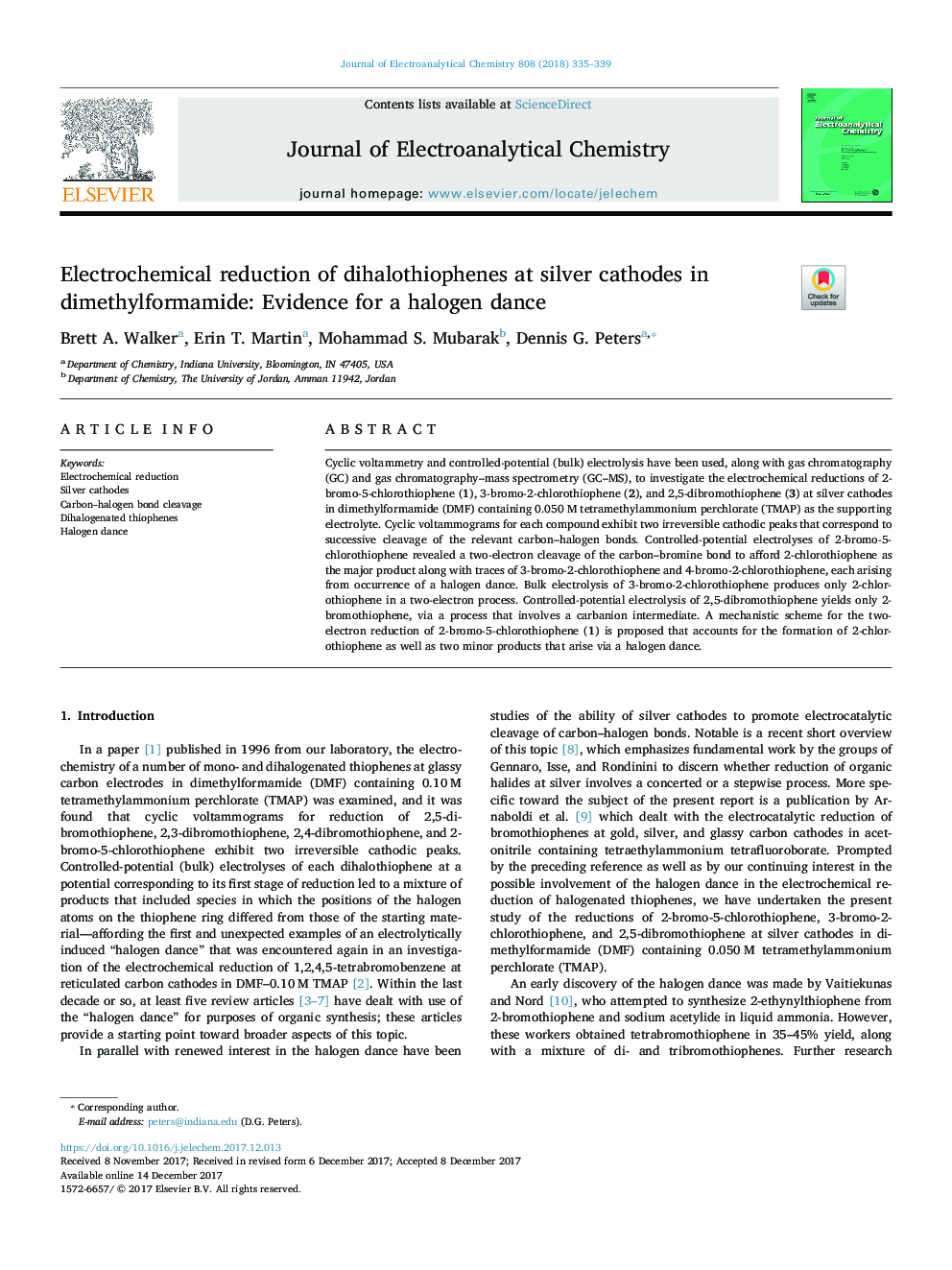| Article ID | Journal | Published Year | Pages | File Type |
|---|---|---|---|---|
| 6662290 | Journal of Electroanalytical Chemistry | 2018 | 5 Pages |
Abstract
Cyclic voltammetry and controlled-potential (bulk) electrolysis have been used, along with gas chromatography (GC) and gas chromatography-mass spectrometry (GC-MS), to investigate the electrochemical reductions of 2-bromo-5-chlorothiophene (1), 3-bromo-2-chlorothiophene (2), and 2,5-dibromothiophene (3) at silver cathodes in dimethylformamide (DMF) containing 0.050Â M tetramethylammonium perchlorate (TMAP) as the supporting electrolyte. Cyclic voltammograms for each compound exhibit two irreversible cathodic peaks that correspond to successive cleavage of the relevant carbon-halogen bonds. Controlled-potential electrolyses of 2-bromo-5-chlorothiophene revealed a two-electron cleavage of the carbon-bromine bond to afford 2-chlorothiophene as the major product along with traces of 3-bromo-2-chlorothiophene and 4-bromo-2-chlorothiophene, each arising from occurrence of a halogen dance. Bulk electrolysis of 3-bromo-2-chlorothiophene produces only 2-chlorothiophene in a two-electron process. Controlled-potential electrolysis of 2,5-dibromothiophene yields only 2-bromothiophene, via a process that involves a carbanion intermediate. A mechanistic scheme for the two-electron reduction of 2-bromo-5-chlorothiophene (1) is proposed that accounts for the formation of 2-chlorothiophene as well as two minor products that arise via a halogen dance.
Related Topics
Physical Sciences and Engineering
Chemical Engineering
Chemical Engineering (General)
Authors
Brett A. Walker, Erin T. Martin, Mohammad S. Mubarak, Dennis G. Peters,
